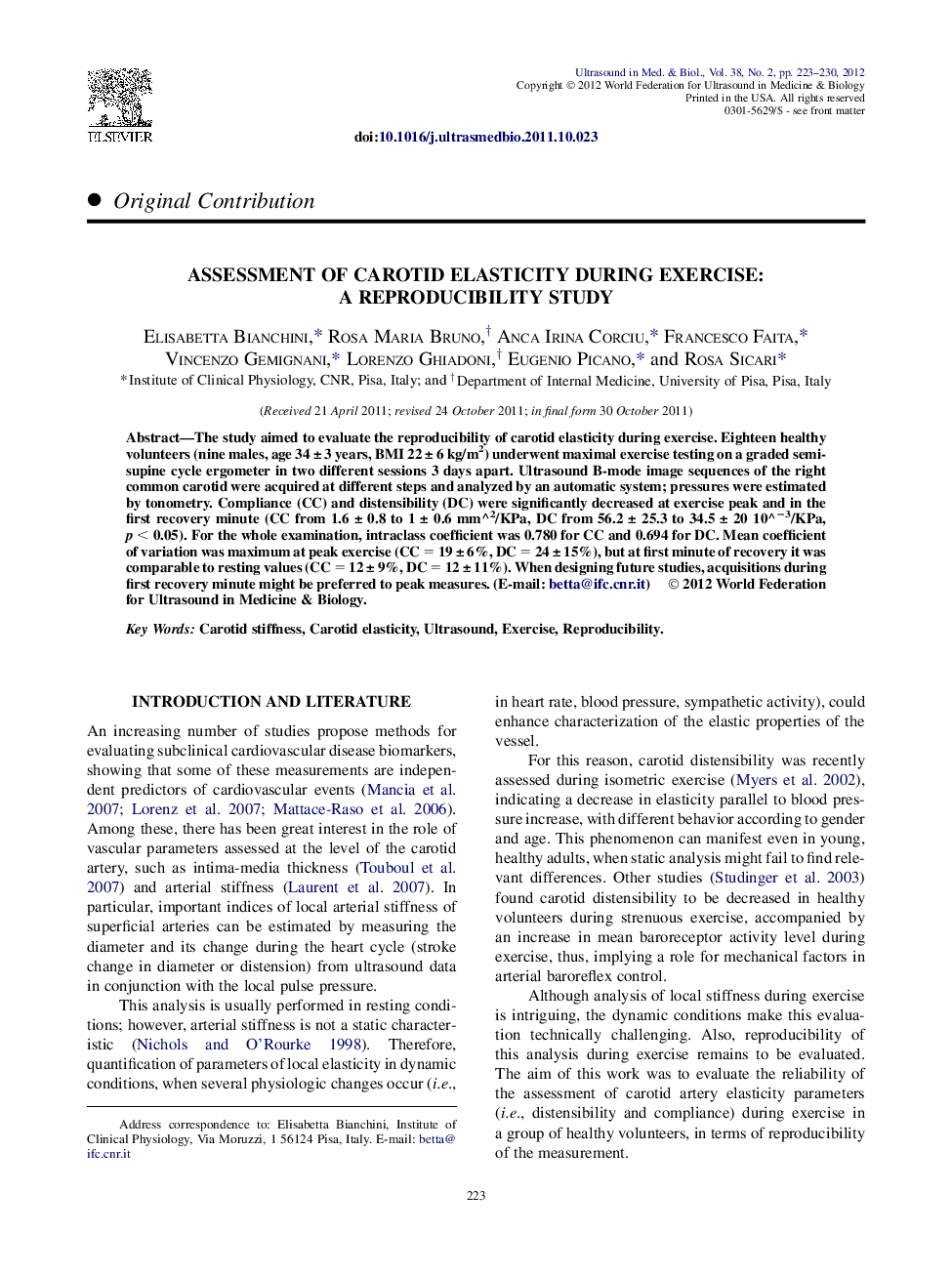| Article ID | Journal | Published Year | Pages | File Type |
|---|---|---|---|---|
| 1761464 | Ultrasound in Medicine & Biology | 2012 | 8 Pages |
Abstract
The study aimed to evaluate the reproducibility of carotid elasticity during exercise. Eighteen healthy volunteers (nine males, age 34 ± 3 years, BMI 22 ± 6 kg/m2) underwent maximal exercise testing on a graded semi-supine cycle ergometer in two different sessions 3 days apart. Ultrasound B-mode image sequences of the right common carotid were acquired at different steps and analyzed by an automatic system; pressures were estimated by tonometry. Compliance (CC) and distensibility (DC) were significantly decreased at exercise peak and in the first recovery minute (CC from 1.6 ± 0.8 to 1 ± 0.6 mm^2/KPa, DC from 56.2 ± 25.3 to 34.5 ± 20 10^â3/KPa, p < 0.05). For the whole examination, intraclass coefficient was 0.780 for CC and 0.694 for DC. Mean coefficient of variation was maximum at peak exercise (CC = 19 ± 6%, DC = 24 ± 15%), but at first minute of recovery it was comparable to resting values (CC = 12 ± 9%, DC = 12 ± 11%). When designing future studies, acquisitions during first recovery minute might be preferred to peak measures.
Related Topics
Physical Sciences and Engineering
Physics and Astronomy
Acoustics and Ultrasonics
Authors
Elisabetta Bianchini, Rosa Maria Bruno, Anca Irina Corciu, Francesco Faita, Vincenzo Gemignani, Lorenzo Ghiadoni, Eugenio Picano, Rosa Sicari,
